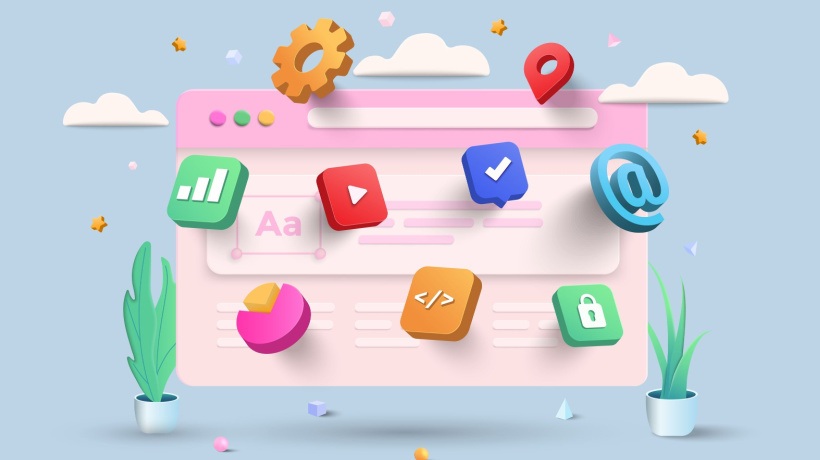Interactive Learning Experiences With eLearning
In this era of digital advancement, the realm of education has undergone a remarkable metamorphosis due to the emergence of eLearning. With the continuous evolution of technology, conventional learning methods are gradually relinquishing their dominance to embrace a more interactive and captivating approach. eLearning platforms have revolutionized education by offering a dynamic learning experience that captivates minds and enhances knowledge retention. The exploration of interactive learning in the realm of eLearning is the focus of this article, aiming to unravel its profound advantages for knowledge seekers.
10 Ways eLearning Transforms Education Through Interactive Learning Experiences
1. Immersive Multimedia Content
eLearning platforms have mastered the art of creating immersive learning experiences through the integration of multimedia content. Learners now have access to a variety of interesting materials like films, interactive quizzes, simulations, and Virtual Reality experiences rather than just textbooks and lectures. These multimedia elements not only grab attention but also make complex concepts easier to understand. By appealing to multiple senses, eLearning enhances engagement and boosts knowledge retention.
2. Gamification: Learning Made Fun
Gamification [1] is a powerful technique used in eLearning to make the learning process more enjoyable and interactive. By incorporating game elements like points, badges, leaderboards, and challenges, eLearning platforms transform educational content into a stimulating game-like experience. Learners are motivated to progress, compete with others, and achieve milestones, fostering a sense of achievement and accomplishment. Gamified eLearning environments promote healthy competition, improve motivation, and create a positive learning atmosphere.
3. Interactive Assessments And Feedback
Traditional assessments often feel monotonous and one-sided, where learners answer questions without receiving immediate feedback. In contrast, eLearning platforms offer interactive assessments that provide instant feedback and explanations. Learners can measure their comprehension, pinpoint areas for development, and receive personalized feedback catered to their performance through interactive quizzes and real-time evaluations. This immediate feedback loop enhances the learning experience, promotes active learning, and allows learners to track their progress effectively.
4. Collaborative Learning Opportunities
Collaborative learning [2] is made possible by eLearning systems, which let students interact and work with instructors and peers around the world. Learners can have meaningful conversations, share viewpoints, and benefit from one another in discussion forums, chat rooms, and virtual classrooms. The collaborative nature of eLearning fosters a sense of community, encourages critical thinking, and broadens perspectives through diverse interactions.
5. Adaptive Learning And Personalization
The ability of eLearning to adjust and customize the learning experience in accordance with individual needs is one of its amazing features. Advanced algorithms and Artificial Intelligence enable eLearning platforms to analyze learners' progress, identify strengths and weaknesses, and deliver customized content accordingly. Adaptive learning pathways ensure that learners receive the most relevant and targeted material, optimizing their learning potential. This personalized approach enhances engagement, reduces time spent on irrelevant content, and accelerates learning outcomes.
6. Real-World Simulations And Experiences
eLearning platforms often provide simulations and virtual environments that replicate real-world scenarios. These simulations allow learners to apply theoretical knowledge to practical situations, honing their problem-solving skills and critical thinking abilities. For example, medical students can practice surgical procedures in virtual operating rooms, and aspiring pilots can simulate flight experiences. Such realistic experiences bridge the gap between theory and practice, preparing learners for real-life challenges and enhancing their confidence.
7. Continuous Learning And Microlearning
eLearning embraces the concept of continuous learning by offering bite-sized, easily consumable content known as microlearning [3]. Instead of overwhelming learners with lengthy modules, eLearning breaks down the material into smaller, focused units. Microlearning enables learners to learn at their own pace and convenience, fitting learning into their busy schedules. These bite-sized lessons can be accessed anytime, anywhere, making learning accessible and flexible. Moreover, microlearning facilitates knowledge retention by presenting information in digestible chunks, allowing learners to revisit specific topics whenever needed.
8. Immediate Access To Resources
In a traditional learning environment, students may have to rely on limited textbooks and classroom resources. eLearning, however, opens up a vast world of information and resources at learners' fingertips. Online libraries, digital textbooks, research databases, and curated content provide learners with a wealth of knowledge to explore. Students can study many viewpoints, acquire the latest recent information, and go further into their areas of interest. This immediate access to resources empowers learners to take ownership of their education and encourages self-directed learning.
9. Tracking Progress And Performance
eLearning platforms offer comprehensive tracking and analytics tools that enable learners and instructors to monitor progress and performance effectively. In order to assess their progress and pinpoint areas for development, learners can track their completion rates, quiz results, and time spent on various topics.
On the other side, teachers can learn more about how students are doing, spot frequent problems, and adjust their teaching methods accordingly. The ability to track progress and analyze data ensures a data-driven approach [4] to education, facilitating continuous improvement and personalized support.
10. Cost-Effectiveness And Scalability
Implementing eLearning can be a cost-effective solution [5] compared to traditional classroom-based education. eLearning eliminates the need for physical infrastructure, reduces travel expenses, and minimizes printing costs associated with textbooks and learning materials. Moreover, eLearning allows for scalability, as it can reach a large number of learners simultaneously without geographical limitations. eLearning offers a scalable solution that can be quickly modified to meet the demands of learners at different levels, regardless of whether the organization is a small or a large multinational corporation.
Conclusion
eLearning has revolutionized education by providing an interactive and engaging learning experience. Through the integration of multimedia content, gamification, interactive assessments, and collaborative learning, eLearning captures learners' attention, enhances understanding, and promotes knowledge retention.
The personalized and adaptive nature of eLearning ensures that learners receive tailored content that matches their individual needs, while simulations and real-world experiences bridge the gap between theory and practice. With continuous learning, microlearning, and immediate access to resources, eLearning empowers learners to take control of their education. eLearning will become more and more important in influencing the direction of education, capturing students' attention, and promoting lifelong learning as technology develops.
References
[1] Gamification For Learning: Strategies And Examples
[2] Reasons Why Collaborative Online Learning Activities Are Effective
[4] 5 Steps To A Data-Driven Approach To Learning
[5] The Cost-Effective Solution For Online Mass Education In India









